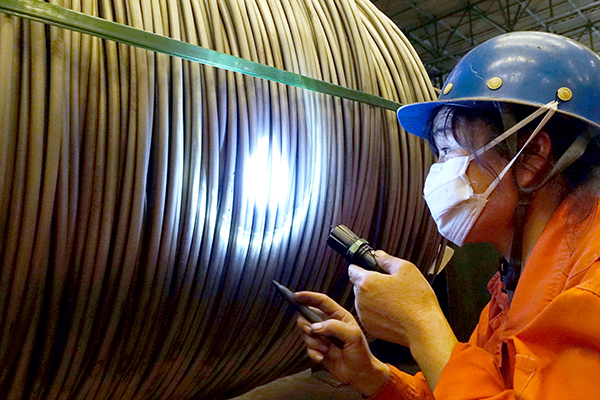China ahead of schedule in phasing out excess capacity
 |
|
A worker at a steel factory in Dalian, Northeast China's Liaoning province, Sept 1, 2016. [Photo/China Daily] |
BEIJING - China has met this year's target of retiring 45 million tons of steel and 250 million tons of coal production capacity, meeting both goals ahead of schedule. The government will press more efforts on preventing a backlash of overcapacity and allocating workers.
This was announced by Chinese Premier Li Keqiang as he presided over the State Council's executive meeting on Wednesday, as a report on retiring excess steel and coal mine capacity was deliberated.
Retiring excess industrial capacity is on top of government's working agenda. When addressing the G20 summit in Hangzhou in September, Chinese President Xi Jinping said that China's plan in cutting excess capacity in the coal and steel sectors were based on China's plan for long-term growth, and that "China has gone to the greatest lengths in its efforts in cutting industrial over-capacity, and we will fulfill our promises."
Phasing out excess industrial capacity properly was made a clear priority by Premier Li in the government work report this March, and he has times and again highlighted the issue at high-level meetings that the government should use market-driven and law-based measures in capacity cuts.
Thanks to such efforts, the operation of a number of steel and coal producers has been improving, while the sector's structures continue to improve. Figures from the National Development and Reform Commission show that profits of industrial enterprises with revenues over 20 million yuan ($2.9 million) grew by 8.4 percent from January to September year on year.
Measures that have enabled such changes include shutting down small- scale and inefficient coal and steel producers and punishing illegal practices. Local governments have also placed strict control in adding any new capacity, and local officials who break the rules are held accountable.
While acknowledging the progress already made, Li also added that the re-employment of workers has made good progress, meeting the original targets set.
An online survey by the State Information Center shows that efforts in cutting excess capacity were applauded by 87.74 percent of participants surveyed.
The year 2016 marks the taking off for China's efforts to cut excess capacity, and such achievement does not come easily, Li said.
Yet there are still issues to be addressed. For example, illegal new capacities in steel and coal in some areas started to revive due to the recent rise in prices. Also, workers relocation still remains a problem for some enterprises. Much is yet to be done in the coming year.
The Wednesday meeting makes clear that appropriate relocation of labor forces as well as proper control of steel and coal prices will be given more attention from now on. The meeting calls for more thorough and comprehensive efforts on re-employment and fiscal subsidiaries.
Li stressed that in the coming year, it is important to phase out excess capacity through reforms, taking further steps in merger and acquisition in steel enterprises, as well as integration of coal mining and power generation.
"We should bear zero tolerance to steel and coal producers which fail to meet national and environmental standards," Li pointed out.
Government at all levels as well as enterprises should lend more efforts to worker re-employment in coal and steel companies and make full use of fiscal subsidiaries, he added.
It was decided at the Wednesday meeting that the State Council will dispatch investigation teams to work on possible cases of fraud and illegal production in steel and coal sectors, so as to ensure the unmitigated fulfillment of the country's target in capacity cuts.
- China's Hebei cuts 14 million tons of steel capacity
- Chinese premier's Eurasia trip to boost cooperation in production capacity
- Steel and coal companies reach capacity reduction annual targets early
- China set to hit steel, coal capacity-cut targets early
- Capacity cut remains priority despite coal price rises









